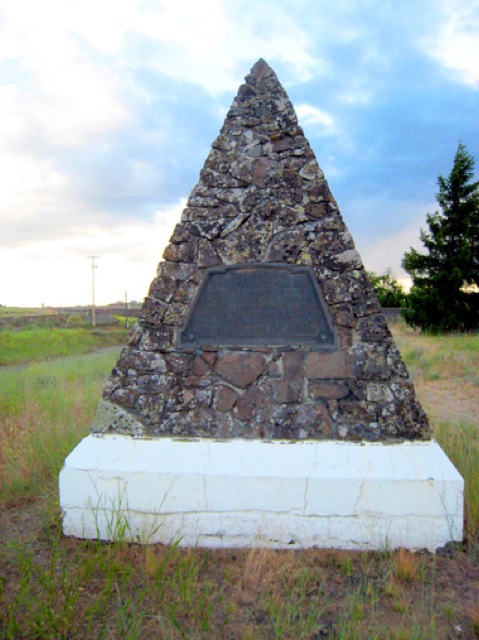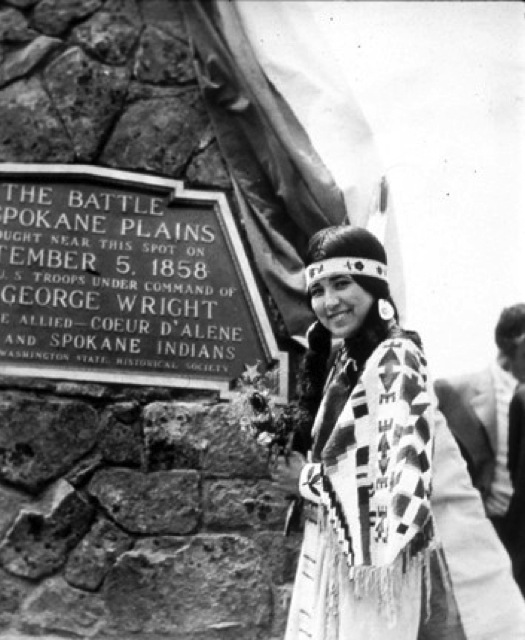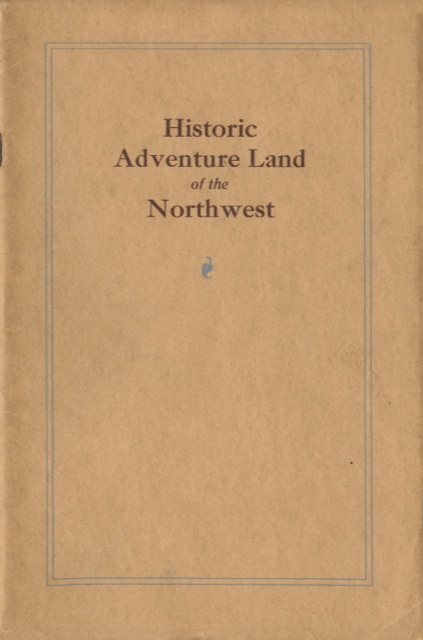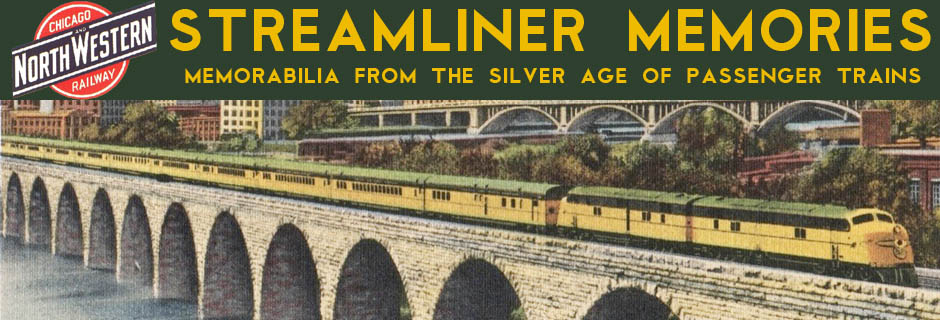On July 23, after the overnight ride from Astoria, the expedition returned to Spokane to dedicate another monument and attend another Indian Congress. The monument was inspired by the Great Northern monuments built for the Upper Missouri and Columbia River expeditions, but was financed by the Washington Historical Society. Local news reports indicate that Ralph Budd and the Great Northern “cooperated” by providing the land, next to GN right of way, for the monument and deeding it to the state.
 The plaque on this monument reads, “The Battle of Spokane Plains was fought near this spot on September 5, 1858, in which U.S. troops under command of Col. George Wright defeated the allied Coeur d’Alene, Palouse, and Spokane Indians. Erected by Washington State Historical Society.”
The plaque on this monument reads, “The Battle of Spokane Plains was fought near this spot on September 5, 1858, in which U.S. troops under command of Col. George Wright defeated the allied Coeur d’Alene, Palouse, and Spokane Indians. Erected by Washington State Historical Society.”
Considering that the monument commemorated a battle in which local Indian tribes were defeated by the U.S. Army in 1858, by today’s standards it seems in very poor taste to make the dedication coincident with a major Indian congress. The battle was far from the worst massacre of Indians by American troops, but neither did it show Americans in a good light.
The Battle of Spokane Plains was best known for two incidents. First, the Army killed 700 Indian horses to prevent them from being used by Indian warriors. Second, Col. Wright captured the father of one of the Indian war chiefs and threatened to kill him unless the chief came into negotiate. The chief, his wife, and several of his men entered the colonel’s camp under a flag of truce, whereupon the colonel ordered his men to summarily execute the chief and four of his men by hanging, sending the chief’s wife home in tears.
Despite any rancor the Indians may have felt about the treatment of their ancestors, at the monument’s dedication they insisted on smoking peace pipes with Major-General Scott. Scott engaged in sign talk and reported the Indians to say, “No time, no where, no more will red man come to fight the white man anywhere.” More than 1,500 people attended the dedication ceremony, which was a little west of Spokane where highway 2 crosses the Great Northern line to Wenatchee.
 Alice Garry, a Spokane Native American who had been named “Princess America” during the 1925 National Indian Congress, poses next to the monument during the dedication ceremony.
Alice Garry, a Spokane Native American who had been named “Princess America” during the 1925 National Indian Congress, poses next to the monument during the dedication ceremony.
After dedicating the monument, the expedition got to enjoy another Indian meeting known as the Second National Indian Congress. The first such congress had been organized the October before by the mayor of Spokane when he learned that 3,000 Indians were planning to attend a football game between Gonzaga University and the Haskell Indian Institute in Kansas; it is likely that he was inspired by the Great Northern’s Fort Union event that took place the previous July. The 1925 Spokane congress proved so successful that the city held another one in 1926, which was either timed to coincide with the Columbia River Expedition or the other way around.
 This later edition of Flandrau’s Historic Northwest Adventureland (shown here) has the same text but many new photographs, including pictures of the Great Northern’s six monuments–Verendrye, Meriwether, Stevens, Bonners Ferry, Wishram, and Astor–but not Spokane Battlefield, suggesting that GN did not really identify with that monument even though it was built on its right of way. Click image to download a 14.3-MB PDF of this booklet.
This later edition of Flandrau’s Historic Northwest Adventureland (shown here) has the same text but many new photographs, including pictures of the Great Northern’s six monuments–Verendrye, Meriwether, Stevens, Bonners Ferry, Wishram, and Astor–but not Spokane Battlefield, suggesting that GN did not really identify with that monument even though it was built on its right of way. Click image to download a 14.3-MB PDF of this booklet.
After another night on the train, the expedition spent two days/one night in Glacier National Park, enjoying the trails, scenery, and hotels, as well as stopping at both the Stevens statue and Camp Disappointment monument. The Columbia River Special then returned eastern members of the group to St. Paul and Chicago.
